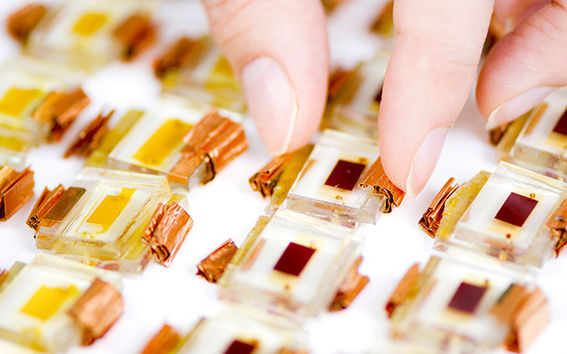Serious shortcomings in aging tests of new solar cell materials

Perovskite and dye-sensitized solar cells have been suggested as energy efficient and cost-effective challengers to silicon solar cells currently on the market. So far, the development of challenger cells has focused mainly on studying and improving their efficiency. In order for the cells to become commercially viable, however, the cells need to have a sufficient life-span, not only be efficient.
Researchers at Aalto University have analysed 261 ageing tests conducted on perovskite and dye-sensitised solar cells. Major shortcomings were discovered in both how the results had been reported and how tests had been implemented.
'In about half of the ageing studies, the data was published only for one solar cell. Studying only one cell does not yield a sufficient amount of data to reliably compare how different materials age, that is, lose efficiency over time,’ says Doctoral Student Armi Tiihonen.
The researchers also found other deficiencies in the stability studies. Only a third of tests reported the intensities of visible and UV light, the humidity and temperature. Most of the tests – 52 per cent – did not mention the intensity of the UV light. UV light is a significant stress factor for most types of solar cells, shortening the cells’ lifetimes more than pure visible light.
About half of the ageing tests had been performed solely in dark conditions. Only 15 tests had been conducted outdoors and three tests were made using modules comprising several cells connected together. This goes against the principle of testing the cells in conditions in which they will be used, which is a requirement for commercialisation.
Research field requires more courage and closer cooperation
The inadequately reported test conditions reduce the reliability of the results and slow down the development of the new solar cell technologies. Aalto researchers hope that a more daring approach could be found in the field so that tests on ageing could also be implemented in actual conditions in which the cells will also be used in energy production.
'The field needs common standards. High-quality, well-reported, and standardised tests would reinforce the confidence of industry and investors in the technologies,’ says Docent Kati Miettunen who directed the work.
The researchers have written a detailed checklist for doing high-quality aging tests and how to take testing conditions into consideration and how to select the measurements to be carried out during testing.
'It would be important to assess already in advance how many cells are needed for a statistically valid result,’ says Tiihonen.
The team also proposes organising a series of conferences for establishing common guidelines and standards for ageing tests. It will require close cooperation with other players in the field. For instance, in silicon cell research, the standards have been set by commercial entities, whereas the standards for new organic solar cells made out of materials such as conductive polymers are efforts of research groups.
'Our research is also an open invitation for discussion. We hope that cooperation among the international research community will increase in future,' Tiihonen adds.
In addition to Armi Tiihonen and Kati Miettunen, members of the research group include Janne Halme, Sakari Lepikko, Aapo Poskela and Peter Lund. The article is published in Energy & Environmental Science, the most respected journal in the field of energy.
Further information:
Armi Tiihonen
Doctoral Student
Aalto University
[email protected]
tel. +358 50 4683431
Kati Miettunen
Docent
Aalto University
[email protected]
tel. +358 50 3441729
Article: Critical analysis on the quality of stability studies of perovskite and dye solar cells
- Published:
- Updated:
Read more news

Get to know us: Associate Professor Maria Sammalkorpi
Sammalkorpi received her doctorate from Helsinki University of Technology 2004. After her defence, she has worked as a researcher at the Universities of Princeton, Yale and Aalto.
Aalto computer scientists in ICML 2024
Computer scientists in ICML 2024
In low-hierarchy organisations, even key policy issues are discussed in Slack
In a recent study, Aalto University alumn Lauri Pietinalho, a visiting scholar at New York University's Stern School of Business, and Frank Martela, an assistant professor at Aalto University, investigated how low-hierarchy organisations deal with shared policies in confrontational situations and how authority functions within them.